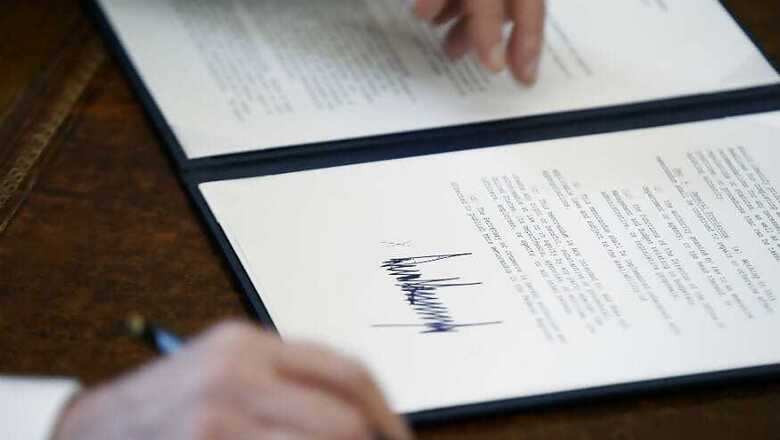
views
Washington: President Donald Trump has taken 18 executive actions since being sworn into office on Jan. 20. Some of the papers he signed were executive orders that dealt with building the wall he promised along the U.S.-Mexico border; temporarily banning entry to the U.S. by refugees and people from seven majority-Muslim nations; and beginning to chip away at the Affordable Care Act.
For other actions, he signed presidential memoranda that covered withdrawing the U.S. from a multinational, Pacific-Rim trade agreement; giving his defense secretary a month to deliver a plan to defeat the Islamic State group; and advancing a pair of stalled but controversial oil pipeline projects.
A look at an "executive order," a "presidential memorandum" and an "executive action."
EXECUTIVE ORDER
Executive orders are one of the ways a president has to exercise his authority. Presidents use the orders to establish policies and manage federal government operations, and they are binding only on the executive branch.
Executive orders are numbered and published in the Federal Register, the government's daily publication of proposed and final regulations, meaning anyone can look them up.
Most executive orders last for years or decades without being rescinded. Some orders that are more ideological in nature sometimes are put in place by presidents of one party and rescinded by presidents from the opposing policy.
Some of the orders Trump signed are intended to undo actions taken by his predecessor, Barack Obama, such as on health care. On the Affordable Care act, an executive order Trump signed shortly after being sworn in to office gives executive branch agencies broad leeway to chip away at parts of the health care law that they oversee.
PRESIDENTIAL MEMORANDUM
Not all of a president's executive authority comes by way of an executive order. They sometimes issue presidential memoranda, which still amount to orders from the president.
Presidential memoranda carry the same weight as an executive order, but tend to be more regulatory in nature.
They are not numbered, but are sometimes published in the Federal Register, which gives the paperwork a little bit more status.
PROCLAMATION
Proclamations are mostly ceremonial in nature. For example, upon the death of a public figure, presidents may issue a proclamation to order that U.S. flags on federal property be flown at half-staff. Presidents also issue proclamations to declare special days, weeks or months, such as National Public Lands Day, Save Your Vision Week and National Family Caregivers Month.
EXECUTIVE ACTION
Executive action is an umbrella term used to include executive orders, presidential memoranda and proclamations.




















Comments
0 comment